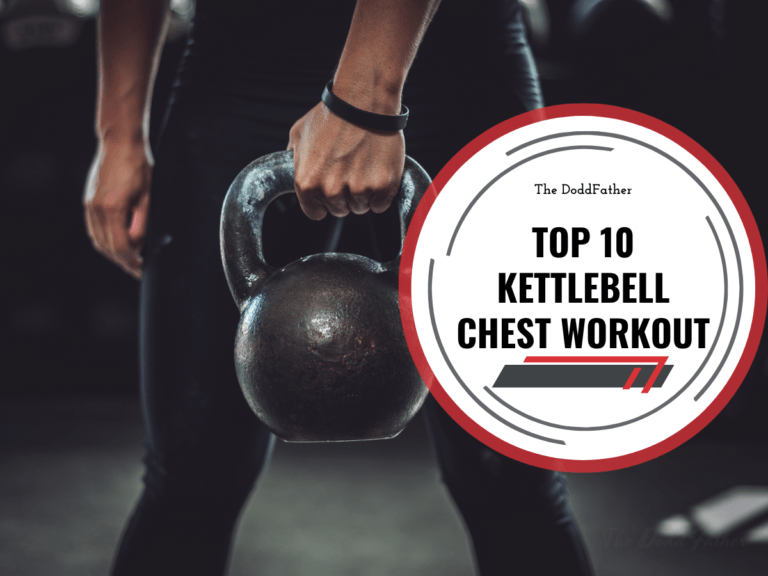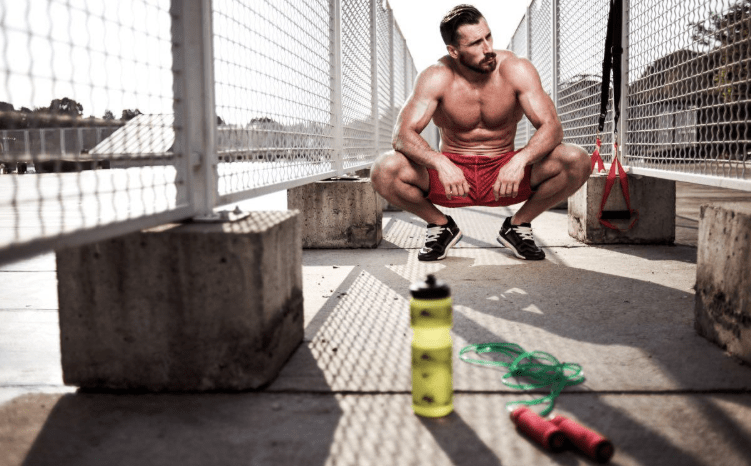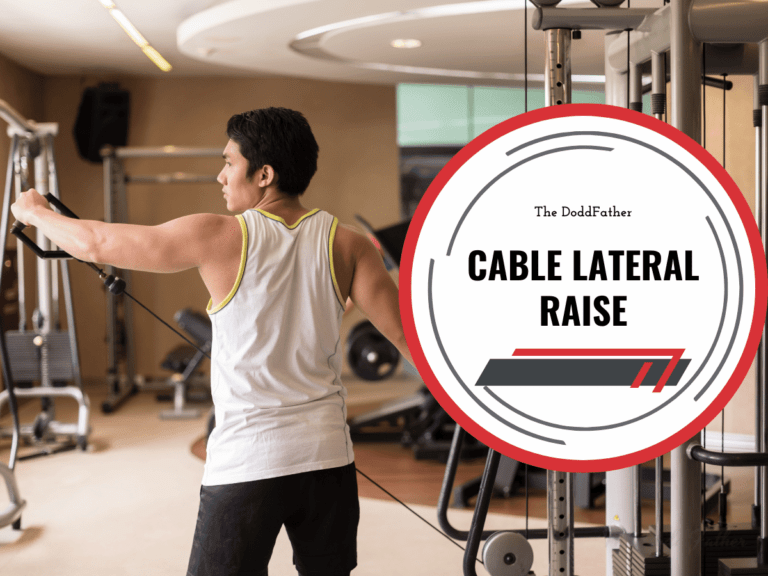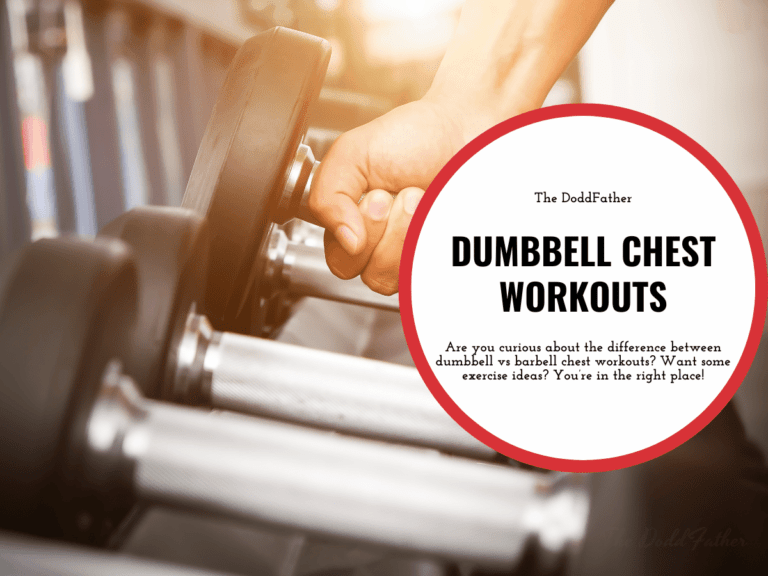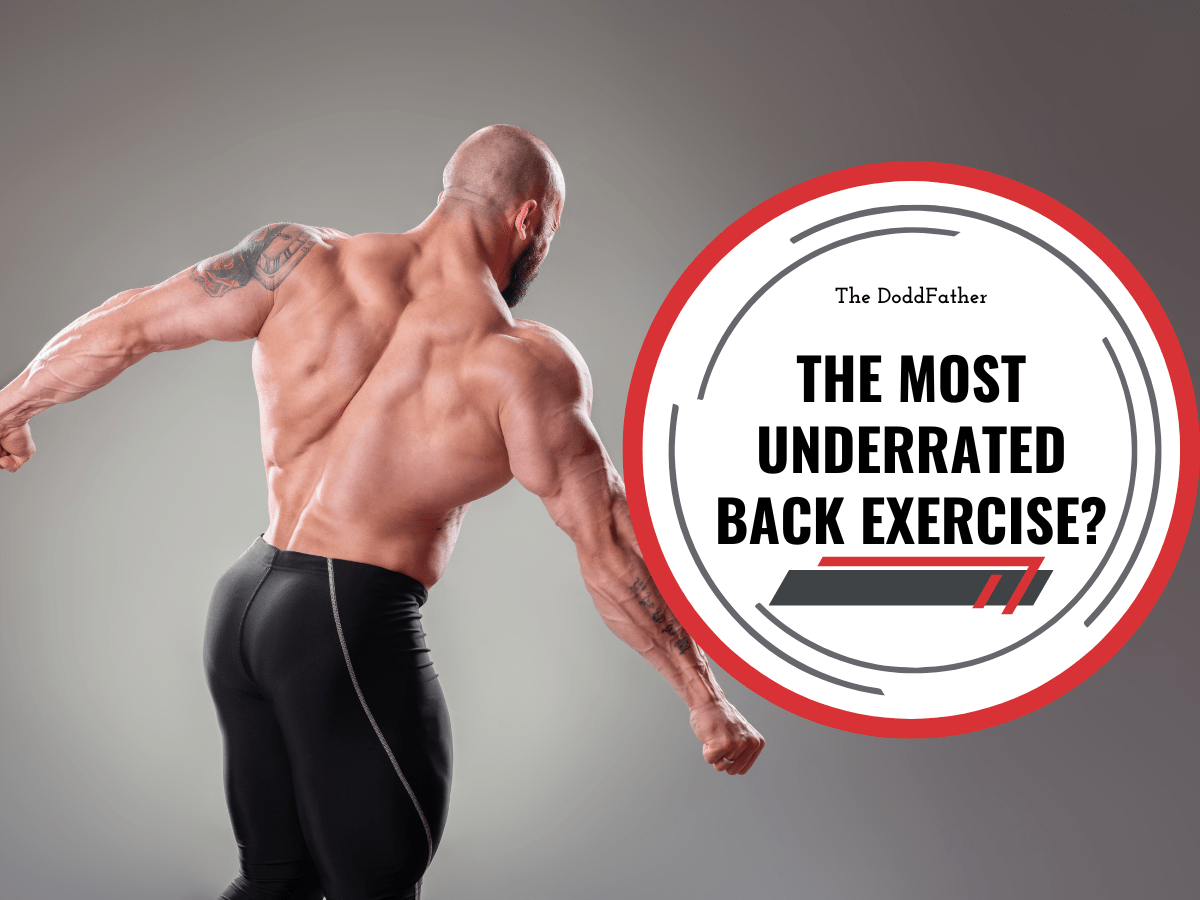
Cody Dodd is a NASM-certified personal trainer and Navy Command Fitness Leader who uses his fitness expertise to write fitness content for The DoddFather. Cody has transformed his physique and confidence by understanding the principles of exercise and fitness.
It all started with a radical fat loss of 55 pounds. From 225 to 170. From a kid who once couldn’t do a pull up, to knocking out 20 pullups in a Navy command competition while floating in the middle of the ocean.
He has a diverse writing and editing background that’s primarily focused on health and fitness, Navy life, and dad life. His work has been featured in Good Dads, as well as Platform Launchers, and Daddying.
The face pull exercise can really help your upper body workout. It is especially good for your shoulder health. This exercise works important muscles in the upper back and shoulders that other workouts might miss. By adding face pulls to your routine, you can fix muscle imbalances, get better posture, and make your upper body stronger and more resilient.
Exercising in different planes of movement is incredibly important for a well rounded, fully functional physique. The face pull trains horizontal pulling – something most lifters don’t get enough of in their routine.
- Face pulls are a highly effective exercise for strengthening the upper back and improving shoulder health.
- This exercise primarily targets the rear deltoids, trapezius, and rotator cuff muscles.
- Maintaining proper form is crucial for maximizing results and avoiding potential injuries.
- Common errors include shrugging the shoulders, using excessive weight, and allowing the elbows to drop.
- Incorporating face pulls into your workout routine can enhance posture, support heavy lifts, and contribute to a well-rounded physique.
Editorial Note: We earn a commission from partner links on The DoddFather. Commissions do not affect our editors’ opinions or evaluations. Learn more about our Editorial Process.
Understanding Face Pulls
Face pulls are an exercise that works the back part of the shoulders, called the rear delts. The rear delts help with shoulder movement and rotation. This exercise also helps the trapezius muscles, which are important for moving the shoulder blades.
Many shoulder exercises only focus on the front and side deltoids. Unlike those, face pulls give a well-rounded workout for the shoulders. They help strengthen the rear delts, which are often ignored. This greater focus on all parts of the shoulders leads to better shoulder stability, better posture, and stronger upper body strength.
The Importance of Face Pulls in Upper Body Training
Incorporating face pulls into your workout can provide many benefits. They mainly help strengthen the upper back muscles. This includes the rear deltoids and the often weak rotator cuff muscles.
Many people focus a lot on “mirror muscles” such as the chest and front deltoids. This can create muscle imbalances and lead to poor posture and increased risk of shoulder injuries. Face pulls can fix this. They strengthen the muscles that pull the shoulders back and keep them aligned properly.
By making the rear deltoids and rotator cuff stronger, face pulls help improve shoulder stability. This stability is important for heavy exercises like the bench press, overhead press, and rows. Stronger rear deltoids also help with posture by pulling the shoulders back into a better position.
Key Muscles Targeted by Face Pulls
The main focus of face pulls is the rear delts. These muscles are very important for moving the shoulder back and letting it rotate outwards.
This exercise also works the middle and lower trapezius muscles. These muscles help pull the shoulder blades together and lift them up. This movement is key for keeping your shoulders healthy and avoiding problems.
Using a cable pulley set just above head height makes face pulls easier. It helps you use a natural pulling motion. This way, you can target the important muscles in the upper back that often don’t get much attention.
Preparing for Your Face Pull Workout
Before you start your face pull workout, make sure you have the right equipment. Also, set up a good workout space.
When you have everything ready, you can focus better on your form. This will help you make the most of your face pull workout.
Necessary Equipment for Face Pulls
The best and easiest way to do face pulls is with a cable pulley machine.
These machines are found in nearly all gyms and can be used for many exercises. For face pulls, tie a rope attachment to the high pulley of the cable machine. This rope attachment helps your hands and wrists to move naturally. It also helps you use your muscles better.
Make sure the cable machine works well and that you set the weight stack to a good weight.
Setting Up Your Space for the Exercise
- Start by setting the cable pulley a bit higher than your chest. This height helps you activate your muscles better when you exercise.
- After you set the cable pulley, take a few steps back from the machine to find your starting position. How far back you go will depend on how long your arms are and the length of the rope attachment. Aim for a spot where you feel comfortable and have a little tension in the cable.
- Make sure there’s enough space behind you. This way, you won’t hit anything while exercising. Having enough room lets you move freely and helps you stay focused.
Step-by-Step Guide to Performing Face Pulls
To do a face pull the right way, follow these simple steps. Focus on keeping proper form while you move. Good form is important. It helps you get the most out of the exercise and stops injuries.
Start with a lighter weight to get used to the movement. After you feel comfortable, you can slowly add more weight.
Step 1: Proper Stance and Grip Setup
- Stand with your feet apart, about the width of your shoulders. Keep your knees a bit bent and your core tight. This position gives you a strong base for the exercise.
- Hold the rope attachment with an overhand grip. Your hands should be a little more than shoulder-width apart. You can try an underhand grip if it feels better for you. See which grip you like best.
- Some people think one grip is better than the other, but both ways work well for the muscles you want to target. Stay upright during the exercise. Try not to hunch forward.
Step 2: Executing the Pull with Correct Form
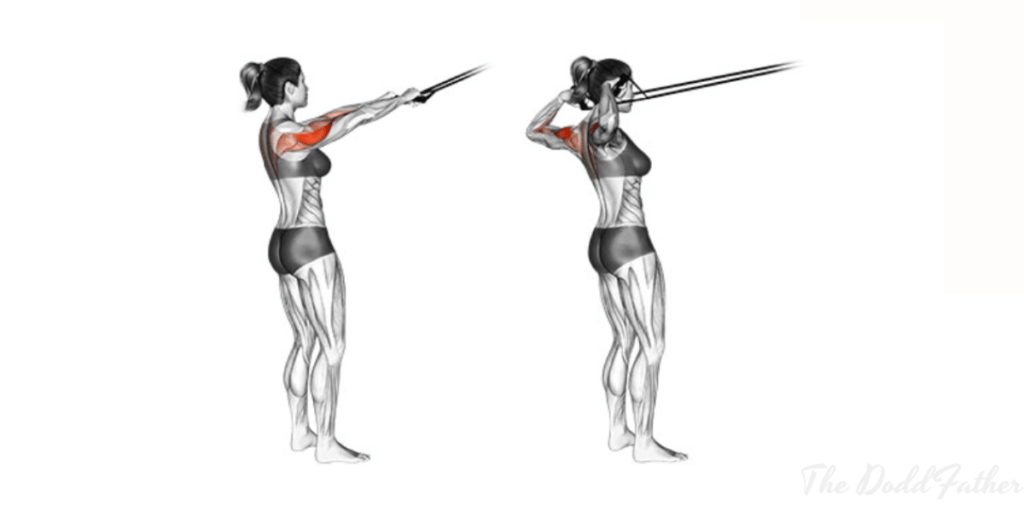
As you start the pull, lead with your elbows. Keep them high and wide. This position helps engage the rear delts well.
Move at a steady pace. Do not jerk or swing your upper body. Controlled movements help work the muscles better and lower the chance of getting hurt.
When the rope gets close to your face, rotate your shoulders outward. Pull the rope to your forehead. This makes the rear delts work harder and improves how your shoulders move.
Step 3: Adjusting Resistance and Repetitions
When picking the weight for your face pulls, choose one that lets you keep proper form through the whole range of motion. Begin with a lighter weight, especially if you are just starting. You can slowly increase the weight as you get stronger.
How many times you repeat the exercise will depend on your fitness level and what you want to achieve. A good aim is to do 8-15 repetitions for 2-3 sets. Make sure you can do all the repetitions while keeping good form.
Pay attention to your body. If you have trouble maintaining proper form, lower the weight or reduce the number of repetitions.
Common Mistakes and How to Avoid Them
The face pull looks like a simple exercise, but there are many common mistakes that can make it less helpful and may even cause injuries. Knowing these mistakes and how to avoid them will help you do the exercise right and get the most benefits.
It’s important to keep good form for any exercise, and face pulls are no different. When you focus on the right technique, you can work the muscle groups you want effectively. This way, you can also lower the chances of getting hurt or feeling strain.
Overcomplicating the Movement
One common mistake people make is making the face pull harder than it should be. This exercise is great because it is simple. It is a pulling movement that works the rear delts, traps, and rotator cuff muscles.
Many people mess up their form by using too much weight or swinging their bodies. They give up proper technique to lift more. This ruins the exercise and can lead to injuries.
Instead, you should focus on doing it correctly. Keep the movement slow and controlled. Feel your muscles working. Don’t rush through it. The goal is to target the muscle groups well, not just to move the weight.
Neglecting Posture and Alignment
Maintaining good posture and alignment during exercise is very important. It helps you get the most out of the workout and keeps your shoulder health safe.
Many people round their shoulders or lean forward when pulling the rope towards their face. This leads to improper form, which takes attention away from the target muscles. It can also put extra stress on the shoulders and the upper back.
Make sure to keep your chest up, shoulders down, and back straight while you move. Use your core to stay stable and avoid any unwanted movement in your lower back. Remember, the aim is to strengthen the muscles that help good posture and not to strengthen bad habits.
Alternative Exercises for Standing face pull
Sometimes, you might have to change your workout because of the equipment you have or other limitations. There are other exercises that can work the same muscle groups as the standing face pull. This way, you can keep your training balanced and complete.
Adding alternative exercises to your routine is important. They help you challenge your muscles and support even, well distributed muscle development.
Standing cable rear delt row
The standing cable rear delt row is a great exercise. It serves as a good alternative to the face pull. This exercise uses the cable machine and works similar muscle groups. It mainly focuses on the rear deltoids and uses a different movement compared to the face pull.
To do a standing cable rear delt row, stand in front of the cable machine. Make sure your feet are shoulder-width apart. Grab the cable handles with an overhand grip. Your palms should face each other. Keep your knees a little bent. Engage your core and keep your back straight.
Pull the handles toward your chest. Make sure to bring your elbows back and squeeze your shoulder blades together. Hold that position for a moment. Then, slowly return to the starting position.
Conclusion
Adding face pulls to your upper body workouts can really boost your strength and stability. This exercise works important muscles like the rear deltoids and upper back, which help improve your posture and lower the chance of injuries.
Make sure to pay attention to your form, alignment, and how much weight you use to get the most from this exercise. Avoid getting too complicated with the movement and keep a balanced approach.
If you need different options, exercises like standing cable rear delt rows can also help your fitness plan. Take on the challenge, stay steady, and enjoy the advantages of a stronger upper body!
Frequently Asked Questions
What muscles does face pull work?
Face pulls mainly work the rear deltoids, the trapezius (mid and lower parts), and the rotator cuff muscles. They also use the muscles that pull your shoulder blades together and keep them stable. This helps make your upper back strong and steady.
How to do face pulls correctly?
To do face pulls correctly, use a rope attachment on a cable pulley. Set the pulley a bit higher than your head. Stand up straight. Pull the rope toward your face. Lead with your elbows. At the end of the movement, rotate your shoulder joint outward.
Are face pulls shoulder or back?
Face pulls work both the upper back and shoulders, but they are mainly seen as an upper back exercise. They focus on the rear deltoids. These muscles help with shoulder extension and external rotation. Face pulls also engage the muscles that move the shoulder blades.
Are face pulls good or bad for you?
Face pulls are safe and helpful for your shoulder health and upper body strength, as long as you do them with proper form. They can improve your posture, make your rotator cuff stronger, and help stop muscle imbalances. If you have any shoulder issues before starting, it’s a good idea to talk to a physical therapist.
Are face pulls overrated ?
In my opinion, they are underrated. Face pulls are important for keeping your shoulders healthy and building upper body strength. This exercise works on the rear delts, upper back, and traps. It helps with your posture and can stop shoulder injuries. Adding face pulls to your workout can give you great results.
How heavy should face pulls be?
The weight you use for face pulls should let you keep proper form during the whole exercise. You should feel your upper back and shoulders working, not your lower back or arms. If you start leaning back or using momentum, the weight is too heavy.
Is it better to pull closer to your chin or your forehead?
Pulling closer to your forehead during face pulls can help you move more and get a better turn of the shoulder joint. Both ways can work well, though. The best spot to aim for may change a bit depending on things like how long your arms are and how your cable machine is set up.


